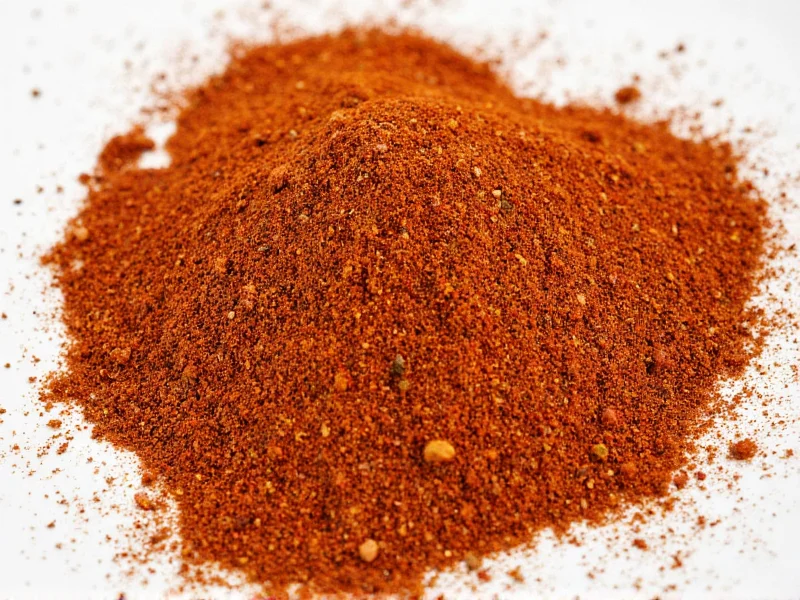Cajun seasoning represents the vibrant culinary heritage of Louisiana's Acadian settlers. Unlike store-bought versions that often contain fillers, authentic homemade blends focus on balanced heat and complex flavor layers. Understanding the proper ingredient ratios transforms ordinary dishes into extraordinary Creole-inspired creations.
The Cultural Roots of Cajun Seasoning
Developed by French-speaking Acadians exiled to Louisiana in the 18th century, Cajun cuisine evolved through resourcefulness in rural South Louisiana. Unlike Creole cooking centered in New Orleans, Cajun food developed in the bayous and prairies where cooks relied on available ingredients. The seasoning blend reflects this practicality—using dried spices that preserved well in the humid climate without refrigeration.
Essential Ingredients Breakdown
Authentic Cajun seasoning avoids salt and fillers like cornstarch. Each component serves a specific purpose in creating the signature flavor profile:
| Ingredient | Flavor Contribution | Traditional Percentage |
|---|---|---|
| Paprika | Smoky base, color | 30% |
| Garlic Powder | Savory depth | 20% |
| Onion Powder | Sweet complexity | 15% |
| Cayenne Pepper | Primary heat source | 10% |
| Black Pepper | Sharp warmth | 10% |
| White Pepper | Background heat | 8% |
| Dried Oregano | Earthy finish | 7% |
Cajun vs. Creole Seasoning: Clearing the Confusion
Many people mistakenly use these terms interchangeably, but key differences exist:
- Cajun seasoning typically contains no tomatoes or herbs de Provence, focusing on heat-forward profiles developed in rural Louisiana
- Creole seasoning often includes tomatoes, celery salt, and more herbs, reflecting New Orleans' cosmopolitan influences
- Cajun blends traditionally use white pepper for its distinctive bite, while Creole versions might use allspice
Perfect Homemade Cajun Seasoning Recipe
This authentic cajun seasoning spice mix recipe yields approximately ½ cup of versatile seasoning. Adjust heat levels to personal preference while maintaining the foundational flavor balance.
Ingredients
- 3 tablespoons paprika (smoked preferred)
- 2 tablespoons garlic powder
- 1½ tablespoons onion powder
- 1 tablespoon cayenne pepper
- 1 tablespoon freshly ground black pepper
- 1½ teaspoons white pepper
- 1 teaspoon dried oregano
Preparation Method
- Combine all ingredients in a small bowl
- Whisk thoroughly for 2 minutes to ensure even distribution
- Sift through a fine mesh strainer to eliminate clumps
- Transfer to an airtight container away from light and moisture
- Allow flavors to meld for 48 hours before first use
Practical Usage Guidelines
Mastering how to use cajun seasoning spice mix properly makes the difference between authentic flavor and overwhelming heat:
Meat Preparation
Rub 1-2 teaspoons per pound of meat 30 minutes before cooking. For chicken, work seasoning under the skin. With red meats, pair with a touch of brown sugar to balance the heat.
Seafood Enhancement
Use more sparingly with delicate fish (½ teaspoon per pound). For shrimp and crawfish boils, add 2 tablespoons directly to boiling water during the last 5 minutes of cooking.
Soup and Stew Integration
Add 1 teaspoon at a time during the last 20 minutes of cooking. The flavors deepen as they simmer, so resist adding full amounts at the beginning.
Storage and Shelf Life
Proper storage maintains the volatile oils that give homemade cajun seasoning its superior flavor:
- Use dark glass or opaque containers to protect from light
- Store in a cool, dry place away from the stove
- Maximum freshness: 3-4 months (commercial blends often last longer due to anti-caking agents)
- Test potency by rubbing a small amount between fingers—if aroma is weak, it's time to refresh your blend
Customization Techniques
While traditional cajun seasoning spice mix follows specific ratios, personalizing your blend enhances culinary creativity:
For Mild Preferences
Reduce cayenne to 1 teaspoon and increase paprika to 4 tablespoons. Add ½ teaspoon thyme for additional complexity without heat.
For Smoky Profiles
Substitute 1 tablespoon regular paprika with smoked paprika. Add ¼ teaspoon ground chipotle powder for deeper campfire notes.
For Balanced Heat
Maintain the standard ratio but toast whole peppercorns before grinding. This releases essential oils that create more rounded heat than pre-ground versions.
Frequently Asked Questions
Does authentic cajun seasoning contain salt?
Traditional cajun seasoning spice mix does not contain salt. Authentic blends focus on pure spice combinations, allowing cooks to control sodium levels separately based on dietary needs and dish requirements. Commercial versions often include salt as a filler and preservative.
How long does homemade cajun seasoning last?
Properly stored in an airtight container away from light and moisture, homemade cajun seasoning maintains peak flavor for 3-4 months. The volatile oils in spices gradually dissipate over time. Check potency by rubbing a small amount between fingers—if the aroma has weakened significantly, it's time to make a fresh batch.
What's the difference between cajun and creole seasoning?
Cajun seasoning originates from rural Louisiana and features a heat-forward profile with white pepper, paprika, and garlic. Creole seasoning developed in New Orleans and typically includes tomatoes, celery salt, and more herbs. Cajun blends are generally spicier with earthier notes, while Creole seasoning offers more herbal complexity with moderate heat.
Can I substitute cajun seasoning for cayenne pepper?
No, cajun seasoning cannot directly substitute for cayenne pepper as it contains multiple ingredients with varying heat levels. Cajun seasoning typically contains only 10% cayenne, so using equal amounts would significantly under-season dishes. For heat substitution, use ½ teaspoon cajun seasoning per ⅛ teaspoon cayenne pepper, adjusting to taste.











 浙公网安备
33010002000092号
浙公网安备
33010002000092号 浙B2-20120091-4
浙B2-20120091-4